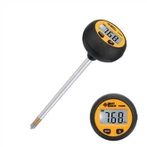Special Usage Tips for Digital Multimeters
The structure of a digital multimeter
A digital multimeter is composed of a digital voltmeter and corresponding functional conversion circuits. It can directly measure various parameters such as AC and DC voltage, AC and DC current, resistance, capacitance, and frequency. Digital voltmeters typically use an integrated circuit chip that integrates an A/D converter with a display logic controller that can directly drive a display. Related resistors, capacitors, and displays are placed around it to form the head of a digital multimeter. It only measures DC voltage, and other parameters must be converted into DC voltage proportional to their own size before they can be measured. The overall performance of a digital multimeter is mainly determined by the performance of the digital meter head. A digital voltmeter is the core of a digital multimeter, and an A/D converter is the core of a digital voltmeter. Different A/D converters form digital multimeters with different principles. The function conversion circuit is an essential circuit for digital multimeters to achieve multi parameter measurement. The measurement circuit for voltage and current is generally composed of passive voltage divider and shunt resistor networks; AC/DC conversion circuits and conversion circuits for measuring electrical parameters such as resistance and capacitance are generally implemented using a network composed of active devices. Function selection can be achieved through mechanical switch switching, range selection can be achieved through conversion switch switching, or through automatic range switching circuit.
Distinguish the transistor using diode mode and 200M Ω mode
1. Place the multimeter switch in the diode mode, as the diode mode of the digital multimeter has a voltage output of about 2.7V. Utilize the unidirectional conductivity of the PN junction to determine the b-pole and NPN/PNP transistors.
(1) Assuming one pole of the transistor is the b pole, connect the red probe to the assumed b pole, and connect the black probe to the other two poles to measure its resistance. If the resistance is low and roughly equal in both measurements, then switch the probes to measure whether their resistance is high and equal. Then, connect the red probe to the b pole and determine if it is an NPN transistor.
(2) If the red probe is connected to the assumed b pole and measured according to the above method, the results are all high resistance and equal. If the resistance of the swapped probe is low resistance and equal, then the black probe is connected to the b pole and is a PNP transistor.






